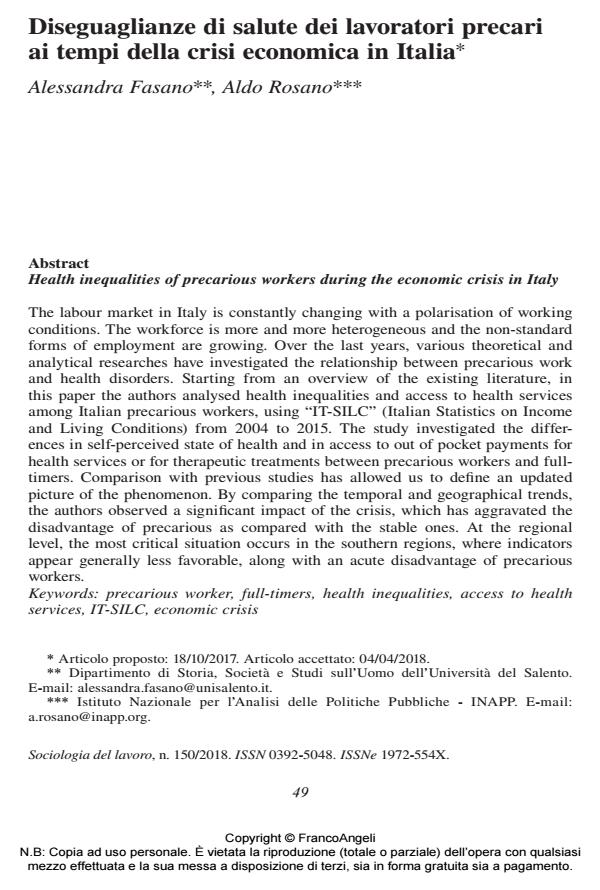Health inequalities of precarious workers during the economic crisis in Italy
Journal title SOCIOLOGIA DEL LAVORO
Author/s Alessandra Fasano, Aldo Rosano
Publishing Year 2018 Issue 2018/150
Language Italian Pages 16 P. 49-64 File size 117 KB
DOI 10.3280/SL2018-150003
DOI is like a bar code for intellectual property: to have more infomation
click here
Below, you can see the article first page
If you want to buy this article in PDF format, you can do it, following the instructions to buy download credits

FrancoAngeli is member of Publishers International Linking Association, Inc (PILA), a not-for-profit association which run the CrossRef service enabling links to and from online scholarly content.
The labour market in Italy is constantly changing with a polarisation of working conditions. The workforce is more and more heterogeneous and the non-standard forms of employment are growing. Over the last years, various theoretical and analytical researches have investigated the relationship between precarious work and health disorders. Starting from an overview of the existing literature, in this paper the authors analysed health inequalities and access to health services among Italian precarious workers, using "IT-SILC" (Italian Statistics on Income and Living Conditions) from 2004 to 2015. The study investigated the differences in self-perceived state of health and in access to out of pocket payments for health services or for therapeutic treatments between precarious workers and fulltimers. Comparison with previous studies has allowed us to define an updated picture of the phenomenon. By comparing the temporal and geographical trends, the authors observed a significant impact of the crisis, which has aggravated the disadvantage of precarious as compared with the stable ones. At the regional level, the most critical situation occurs in the southern regions, where indicators appear generally less favorable, along with an acute disadvantage of precarious workers.
Keywords: Precarious worker, full-timers, health inequalities, access to health services, IT-SILC, economic crisis
Alessandra Fasano, Aldo Rosano, Diseguaglianze di salute dei lavoratori precari ai tempi della crisi economica in Italia in "SOCIOLOGIA DEL LAVORO " 150/2018, pp 49-64, DOI: 10.3280/SL2018-150003